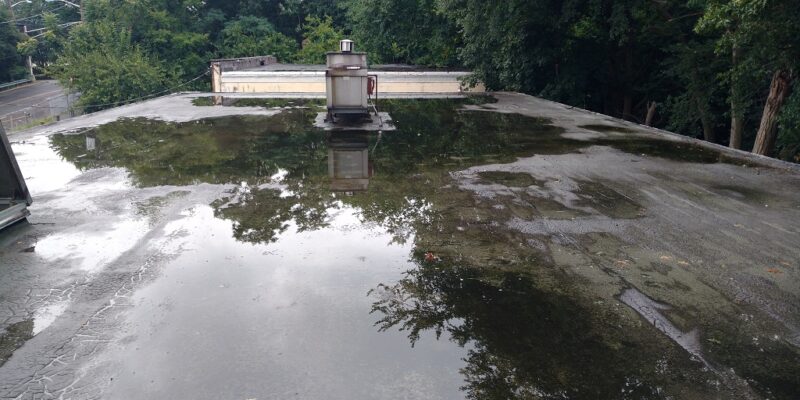Your roof is most notably impacted by direct sunlight. During the summer, the temperature of the air is warmer, and your roof’s total sun exposure is extended. The daily sequence of temperature variation can create stress points where roof components connect to each other. Routine roof system inspections should include checking on these areas of concern and advising when repairs are necessary.
Any type of major storm is a concern for your roof. Following a large storm, it is highly recommended that you have your roof inspected for potential damage. While you might not observe any immediate physical damage, your roof may still be compromised and develop problems over time.
If you have a significant downpour in a short period of time, your roof is also at risk of ponding. If large amounts of water remain on your roof for more than 48 hours after a storm, it’s a cause for concern. Catastrophic consequences such as collapsed roofs have been observed due to major ponding.

